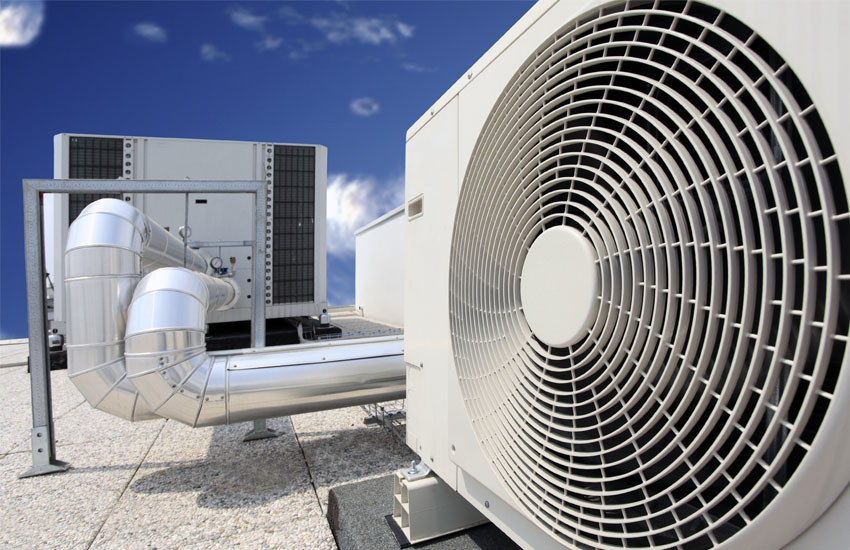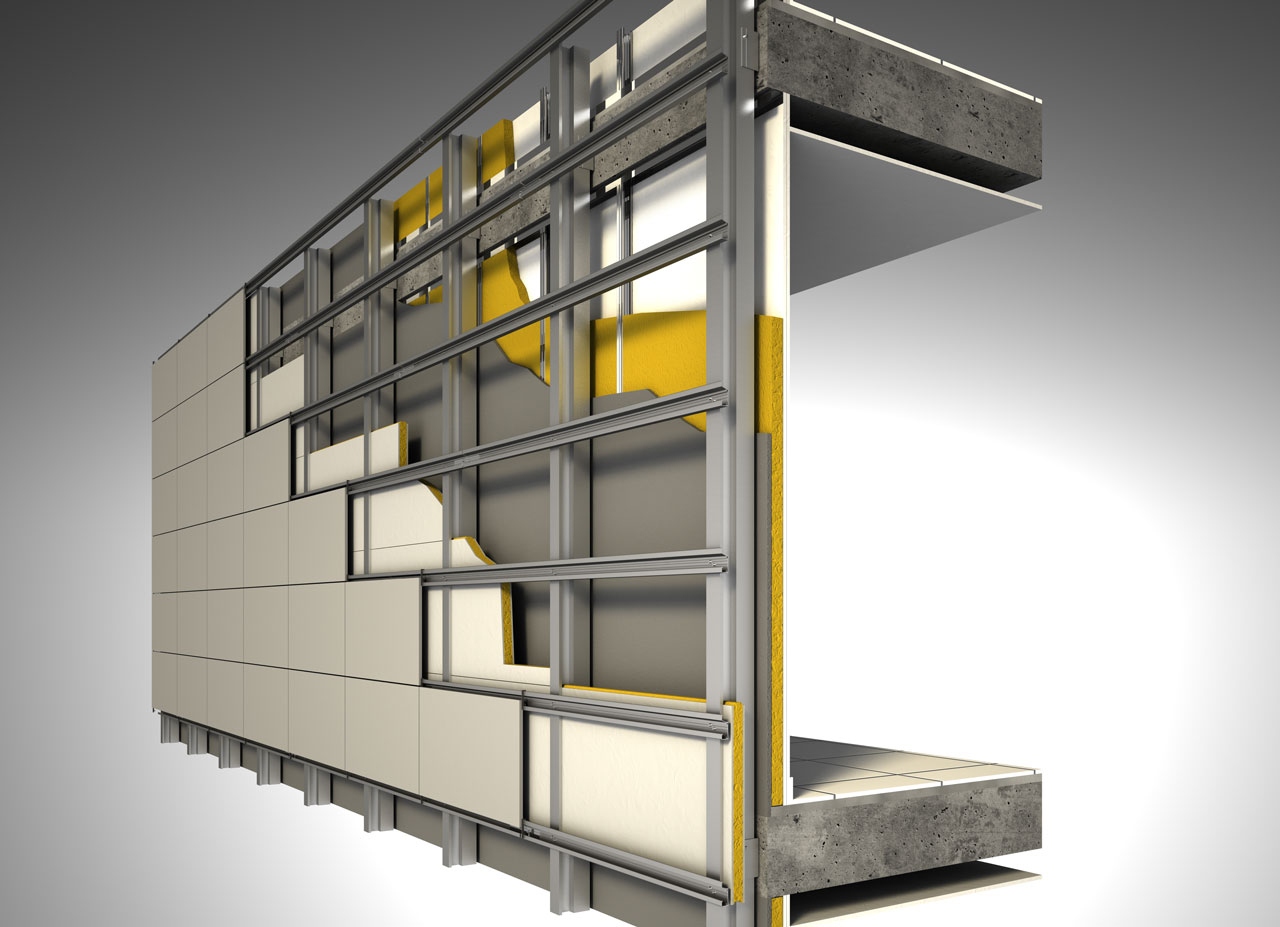Humid, stagnant, polluted air is removed from the premises through the exhaust ventilation. Best of all, this function is performed by a duct fan installed directly into the ventilation duct.
Moreover, such devices can be used in any premises - both in home kitchens and in industrial establishments. Their main advantage is high performance, quiet operation and absence of vibrations.
Types of duct fans

Depending on the shape, the duct fan may look as follows:
- round - is the most popular type, installed in round ventilation ducts;
- rectangular - installed in rectangular or square ducts. Most often, such models are used in industry due to their high power;
- square - also used mainly in industry, designed for installation in square ducts.
You should know that square and rectangular fans are made of metal, and high-quality plastic is used for the production of round ones. Metal fans are much stronger and more durable, while plastic ones are better at absorbing noise.
In addition, duct devices are subdivided into radial and axial:
- an axial exhaust fan is equipped with blades designed to move the forced air along the axis on which the blades are mounted. This design is the most common among all types of duct fans. Advantages include low air resistance and economical energy consumption;
- radial models are spiral blades that spin air by centrifugal force, which then moves into a spiral casing. The incoming air flow is perpendicular to the outgoing air flow, which provides excellent suction power. Therefore, radial fans are effective in large areas.
For the manufacture of device cases, metal or plastic is used. If the model is purchased for household use, then you can opt for a fan in a plastic case. If you plan to use the device in a high-intensity mode at the enterprise, then you need to choose a product in a metal case. Such devices are much more expensive, since they can draw in more cubic meters of air over a certain period of time.
For example, when using a conventional household fan in the kitchen, the device can process up to 350 cubic meters of air, an industrial unit - about 17,000 cubic meters, and individual, heavy-duty models - up to 50,000 cubic meters.
How to choose a duct fan?
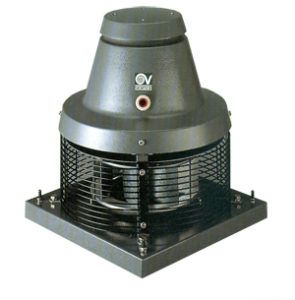
Before buying an exhaust fan, you should decide on the size of the room in which the device will be installed. In most modern apartments, inexpensive axial fans with a capacity of up to 120 cubic meters can be used. Such a device costs approximately $ 30. For rooms with a large area, it is necessary to select the appropriate performance, focusing on the instructions attached to the product.
In cases where the area of the room is small, and the ventilation duct in it is square, you can purchase a round fan, place it in the duct and close it with a square grill.
Duct ventilation can be manual or automatic.It can also turn on with the light. To do this, you need to open one supply wire and connect it to the light switch.
In addition, by installing a double switch, one key can be connected to the light and the other to the fan. The device can be controlled using the remote control. In more expensive and advanced models, the speed of rotation of the blades is automatically adjusted.
Owners of private houses can pay attention to the fireplace duct fan, designed to draw out the combustion products.
Important! An ordinary fan will not cope with such a task as pulling combustion products out of the fireplace.
When buying a device for a fireplace, remember that it must be equipped with double insulation and heat-resistant internal components.
Basic parameters for selection
- When choosing a hood with a fan, it is necessary to be guided by the size and shape of the duct cross-sections.
- It should be remembered that high-power fans are characterized by better performance, therefore, when choosing, you should pay attention to the power of the unit.
- An important parameter is air exchange: within a certain time, the device has time to completely change the surrounding air several times. The more often he does this, the better. To determine this characteristic, the power of the unit is divided by the volume of the room.
- Another important characteristic is the air flow rate. The most optimal will be a unit that produces a speed of 11 to 14 m / s. If the speed is less than 11, then the device will be ineffective, and if it is more than 14, the noise level will increase sharply.
- If you wish to purchase a low-noise fan, the noise level can be determined by the shape of the impeller blades. For example, a fan with forward-curved blades is more efficient, but in this case it will create a lot of noise. Backward curved vanes allow the device to operate quietly and economically.
- If the homeowner is concerned about saving space in his premises, then it is recommended to choose a small device that will fit into the already finished air duct without interference.
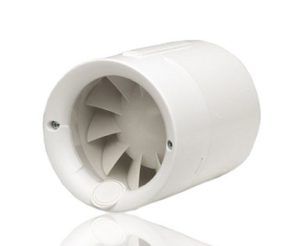
In order for a fan for an exhaust hood in a residential area to work silently, when choosing it, you should pay attention to the presence of a noise-insulated case. Such devices have the following advantages:
- the insulated casing prevents condensate from entering the unit;
- thanks to the sandwich panels of which the case is made, the fan works silently and does not vibrate.
Installation
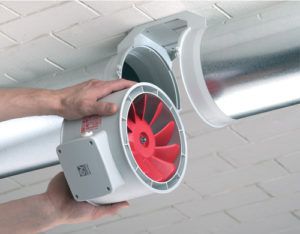
The duct fan can be installed anywhere in the duct. As a rule, it is installed at the inlet of the air duct. This place is especially true if the installation is done on your own. The unit body is equipped with holes for fixing it to the wall. Dowels can be used as fasteners.
Important! There is an arrow on the body of the device indicating the direction of the air flow, which must be observed during installation.
Installation is carried out in such a way that the body of the device fits snugly against the channel. Otherwise, during operation, it will often fail and require repair, the cost of which in some cases may exceed the cost of the fan itself.
When using an air duct, its docking with the fan is carried out with clamps. In this case, you can use a cable duct or ceiling to output the electrical cable.






